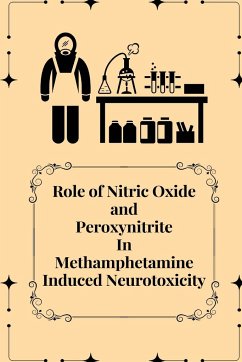Methamphetaraine (METH), a potent psychomotor stimulant drug, is known on the street as "speed", "crystal meth", or "crank". Over the last 50 years, epidemics of METH abuse have occurred in many parts of the world, including Sweden (Inghe, 1969), the United Kingdom (Kiloh and Brandon, 1962), Japan (Brill and Hirose, 1969), and the United States (Kalant, 1966; Kramer at al, 1967; Miller and Hughes, 1994). To this day, abuse of METH continues, with recent surveys indicating that METH abuse is on the rise (Kozel, 1997; Lukas, 1997). It is a potent, indirectly acting sympathomimetic amine and is self-administered by experimental animals and abused by humans (Seiden et al., 1993). Although the abuse liability of METH and its congeners was recognized shortly after its discovery, a concerted effort to assess its long-term effects in the central nervous system was made only in the last 15 years. Administration of METH has profound effects on central nervous system functions. Because of the increased frequency of METH abuse, elucidation of its consequent neurochemical, biochemical and molecular impact is important. Some of the potentially dangerous effects of METH on the brain of humans are known. Of particular interest are reports that monoaminergic systems are especially sensitive to administration of this potent stimulant. Our understanding of the duration of these effects and their consequences may provide valuable insight and guidance for treatment and prevention programs. METH neurotoxicity may be an example of a more general process of terminal degeneration or cellular damage that occurs during aging, injury, or the alteration of brain metabolism. The social problems caused by the abuse of METH and its congeners may be caused or compounded by their neurotoxic effects.








